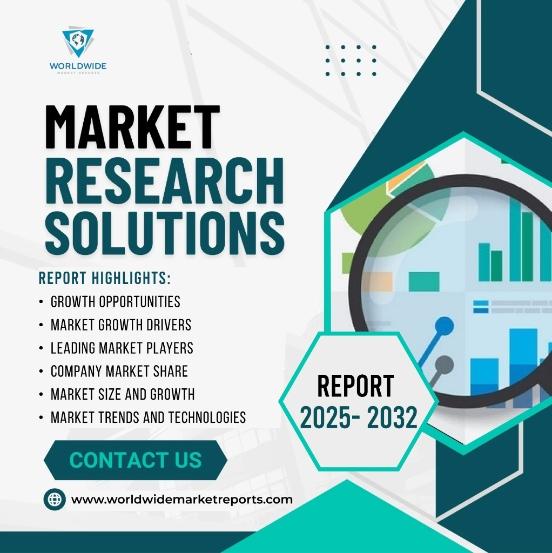Airtel and I&M Bank Tanzania Drive Women’s Economic Inclusion with Digital Tools – TechAfrica News

Report on the Women Financial Literacy & Inclusion Program Initiative in Tanzania
Executive Summary
A strategic partnership has been formed between I&M Bank Tanzania and Airtel Tanzania to launch the Women Financial Literacy & Inclusion Program. This initiative is designed to empower female entrepreneurs by leveraging digital financial services, directly contributing to the achievement of key United Nations Sustainable Development Goals (SDGs). The program aims to provide women with the necessary tools, education, and financial access to build resilient businesses, fostering a more inclusive and stable economy.
Program Objectives and Alignment with Sustainable Development Goals (SDGs)
The core mission of the program is to advance economic and social goals for women, with objectives that are intrinsically linked to the 2030 Agenda for Sustainable Development.
- SDG 5: Gender Equality: The program’s primary focus is to empower women, a critical target of SDG 5, by providing targeted financial education and tools to dismantle economic barriers and reduce gender-based disparities.
- SDG 8: Decent Work and Economic Growth: By equipping female entrepreneurs with skills in financial management and sustainable business practices, the initiative fosters the creation of stronger enterprises, contributing to inclusive economic growth and decent work.
- SDG 1: No Poverty & SDG 10: Reduced Inequalities: Enhancing financial inclusion and providing access to digital financial services are fundamental to lifting communities out of poverty and reducing economic inequalities within society.
A Strategic Partnership for the Goals (SDG 17)
This collaboration is a clear example of SDG 17, which calls for multi-stakeholder partnerships to achieve sustainable development. The synergy between the financial and telecommunications sectors is leveraged to maximize impact.
- I&M Bank Tanzania: Provides foundational expertise in financial services, sustainability commitments, and educational content on financial management.
- Airtel Tanzania: Offers the digital platform and telecommunications infrastructure (SDG 9: Industry, Innovation, and Infrastructure) required to make financial tools and services accessible to a wider audience of women entrepreneurs.
Implementation and Initial Outcomes
The program was officially launched with an inaugural training session in Dar es Salaam, which successfully brought together over 50 women entrepreneurs. This hands-on workshop served as the first step in delivering the program’s objectives.
Core Training Components and SDG Impact
The training curriculum was structured to provide practical and actionable knowledge, with each component supporting specific development goals.
- Digital Finance: Training on the use of digital financial services directly supports SDG 9 by promoting the adoption of technology and innovation for greater financial inclusion.
- Capital and Investment Planning: This module equips entrepreneurs with the skills to secure capital and plan for growth, fostering sustainable business expansion and job creation in line with SDG 8.
- Financial Management: By building capacity for sound financial management, the program enhances the long-term economic resilience of women-led businesses, contributing to poverty reduction (SDG 1).
- Sustainable Business Practices: This component encourages the adoption of business models that are both economically viable and socially responsible, aligning with the overarching principles of sustainable development.
Relevant Sustainable Development Goals (SDGs)
The issues discussed in the article, primarily the empowerment of female entrepreneurs through financial literacy and digital inclusion, are directly connected to several Sustainable Development Goals. These goals focus on gender equality, economic growth, poverty reduction, and education.
-
SDG 5: Gender Equality
The program’s core mission is to “empower female entrepreneurs” and help “women achieve their economic and social goals.” This directly aligns with SDG 5, which aims to achieve gender equality and empower all women and girls. The initiative addresses the economic disparities faced by women by providing them with specific tools and education.
-
SDG 8: Decent Work and Economic Growth
By providing women with the means to “build stronger and more resilient businesses,” the initiative contributes to economic growth. It promotes entrepreneurship and supports small businesses, which are crucial for creating decent work. The article’s statement that “an inclusive economy is a stable economy” reinforces this connection.
-
SDG 1: No Poverty
Economic empowerment is a key strategy for poverty reduction. By providing women with “financial access” and skills for “financial management,” the program equips them to increase their income and build economic resilience, which is a direct approach to tackling poverty at the individual and community level.
-
SDG 4: Quality Education
A central component of the program is the “Women Financial Literacy & Inclusion Program,” which includes training and workshops. This focus on providing practical education and skills in areas like “digital finance, capital and investment planning, and financial management” is directly related to ensuring inclusive and equitable quality education and promoting lifelong learning opportunities.
Specific SDG Targets
Based on the article’s content, several specific SDG targets can be identified as being directly addressed by the initiative.
-
Target 5.a:
“Undertake reforms to give women equal rights to economic resources, as well as access to… financial services…”
The program directly addresses this target by focusing on providing women with “financial access” and the tools needed to engage with “digital financial services.”
-
Target 5.b:
“Enhance the use of enabling technology, in particular information and communications technology, to promote the empowerment of women.”
The collaboration leverages “Airtel Tanzania’s digital services” and focuses on “digital finance” to empower women, which is a clear implementation of this target.
-
Target 8.3:
“Promote development-oriented policies that support… entrepreneurship… and encourage the… growth of micro-, small- and medium-sized enterprises, including through access to financial services.”
The entire initiative is designed to support “female entrepreneurs” and help them build “stronger and more resilient businesses” through financial literacy and access.
-
Target 8.10:
“Strengthen the capacity of domestic financial institutions to encourage and expand access to banking, insurance and financial services for all.”
The partnership between I&M Bank and Airtel Tanzania is an example of strengthening institutional capacity to expand “financial inclusion” and make financial tools “more accessible to a wider audience.”
-
Target 4.4:
“By 2030, substantially increase the number of youth and adults who have relevant skills… for employment, decent jobs and entrepreneurship.”
The program’s training sessions on “financial management,” “capital and investment planning,” and “sustainable business practices” provide women with relevant skills for entrepreneurship.
Implied Indicators for Measuring Progress
While the article announces the launch of the program and does not provide long-term data, it mentions or implies several indicators that could be used to measure progress towards the identified targets.
-
Number of women trained:
The article explicitly states that the launch event brought together “over 50 women” for a one-day training session. This number serves as a direct indicator for measuring the reach of the financial literacy component (relevant to Target 4.4).
-
Uptake of digital financial services:
The program’s goal is to use “digital financial services to help women.” An implied indicator would be the number or proportion of participating women who adopt and actively use the digital financial tools offered by Airtel and I&M Bank (relevant to Targets 5.a, 5.b, and 8.10).
-
Growth of women-led businesses:
The aim to help women “build stronger and more resilient businesses” implies that a key success indicator would be the measured growth, sustainability, or increased revenue of the businesses run by the program’s participants (relevant to Target 8.3).
Summary of SDGs, Targets, and Indicators
| SDGs | Targets | Indicators Identified in the Article |
|---|---|---|
| SDG 5: Gender Equality | 5.a: Equal rights to economic resources and access to financial services. 5.b: Enhance the use of enabling technology for the empowerment of women. |
Proportion of women entrepreneurs gaining access to and using digital financial services. |
| SDG 8: Decent Work and Economic Growth | 8.3: Promote entrepreneurship and growth of small enterprises through access to financial services. 8.10: Expand access to banking and financial services for all. |
Number of stronger and more resilient businesses built by participants; Increased access to financial tools for a wider audience. |
| SDG 4: Quality Education | 4.4: Increase the number of adults with relevant skills for entrepreneurship. | Number of women participating in the financial literacy and skills training program (e.g., “over 50 women”). |
| SDG 1: No Poverty | 1.4: Ensure all men and women have equal rights to economic resources and access to financial services. | Increased access to financial services and tools for women entrepreneurs. |
Source: techafricanews.com

What is Your Reaction?
 Like
0
Like
0
 Dislike
0
Dislike
0
 Love
0
Love
0
 Funny
0
Funny
0
 Angry
0
Angry
0
 Sad
0
Sad
0
 Wow
0
Wow
0



























;Resize=805#)



















































